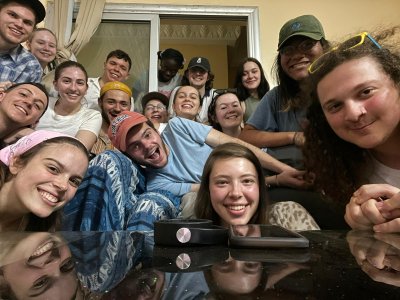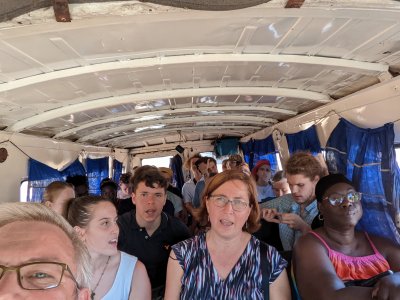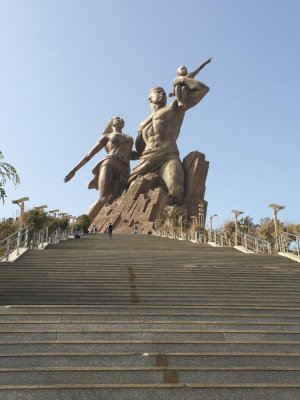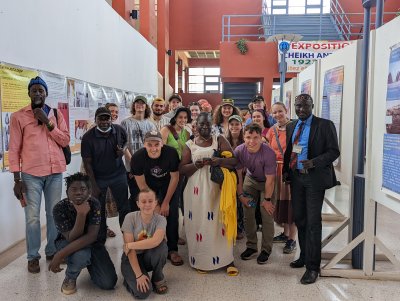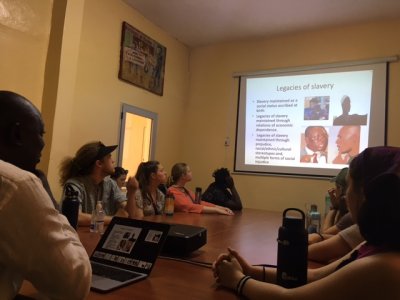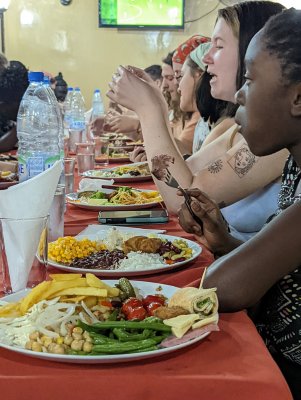Week One
Language
During our first week in Senegal we connected with host families and figured out the rhythms of study. Monday, Tuesday, and Wednesday mornings consist of language study. Yacine Diatta teaches an hour of Wolof. Then students have an hour and a half of French. Wolof is a language spoken in Senegal, Mauritania, and the Gambia. It is the native language of the Wolof people and belongs to the Senegambian branch of the Niger–Congo language family. Some students also live with families that speak Serer and Fula, but Wolof has been adopted as the common language. The multitude of languages adds a layer of complexity to communication in Senegal but students quickly picked up basic greetings to the delight of our host families, taxi drivers and friends we meet on the street.
History
We also began history lessons. Monsieur Taye, a local history teacher started us off with an introduction to the early histories of the Senegambia region before 1400. This included some of the story of the Wolof people. We built on these lessons with a trip to Dakar. On Thursday we climbed into our dedicated Goshen College Ndiaga Ndiaye, a a small public bus used in Senegal.
African Renaissance Monument
We visited the African Renaissance Monument, a 49 meter tall bronze statue with a controversial origin story that was commissioned by President Abdoulaye Wade. It was completed in 2010 to mark 50 years of independence. Inside the statue is a small museum that documents the pan Africa independence movement. Students took an elevator up to the top for a birds eye view of the city.
Cheikh Anta Diop University of Dakar
Our next stop was the Cheikh Anta Diop University of Dakar with an estimated enrollment of over 60,000 students. The University is named after Senegalese physicist, historian and anthropologist Cheikh Anta Diop. We took a tour of the university library which is the oldest and the most important university library in Francophone African countries south of the Sahara. Of special note was an installation honoring Cheikh Anta Diop in the library atrium. Our guide also pointed out that there were over 1,200 seats for studying in the library and they were all full which meant we tip toeing past crowds of students hard at work.
Ibrahima Thiaw
A highlight of the day was a lecture by Ibrahima Thiaw. Dr. Thiaw is a leading practitioner in Africanist archaeology and heritage. He is part of the Laboratoire d’Archéologie at the Institut Fondamental d’Afrique Noire (IFAN) at the-Université Cheikh Anta Diop in Dakar. Much of his recent work has focused on the archaeological study of identity and cultural heritage management. He introduced us to the archaeological history of Gorée Island and the Maison des Esclaves. He framed some critical questions about that cultural heritage site.
Gorée Island is a UNESCO World Heritage Site and Dr. Thiaw has led several digs on the island. Quoting from the UNESCO site, “From the 15th to the 19th century, it was the largest slave-trading center on the African coast. Ruled in succession by the Portuguese, Dutch, English and French, its architecture is characterized by the contrast between the grim slave-quarters and the elegant houses of the slave traders. Today it continues to serve as a reminder of human exploitation and as a sanctuary for reconciliation.”
Maam Samba Guesthouse
After the lecture we found our way to Maam Samba Guesthouse on a relatively quiet back street in north Dakar. Maam Samba is an entrepreneurial extension of the Ndem community. Ndem has hosted Goshen College students regularly over the past 10 years and will likely show up again in these posts. Students had time to explore the local neighborhood before supper and some ended up getting an impromptu tour of a local fishing village.
